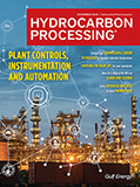Refining
Citgo Petroleum reports $477 MM third quarter profit
Results for the Venezuelan-owned company and other U.S. refiners have touch records this year as prices for motor fuels climbed sharply on the U.S. economic recovery and on global shortages caused by Russia's invasion of Ukraine.
Vietnam's largest refinery to import 2.52 MMt of crude oil in Q4
Vietnam's largest refinery will import 2.52 MMt of crude oil in the fourth quarter to boost operations, state oil firm PetroVietnam said, as authorities try to avert a fuel supply crunch.
Saudi Aramco to ship full oil contract volumes to Asia in December
Saudi Aramco has told at least four refinery customers in North Asia they will receive full contract volumes of crude oil in December.
Chinese refiners boost diesel output to profit from robust export margins
China's refined oil product exports in November are set to hit the highest since April 2020 as refiners ramp up output to multi-month highs to boost diesel supply and profit, offsetting the impact of slower domestic demand from COVID-19 restrictions.
Fire breaks out at Chevron's El Segundo, California refinery
Chevron said fire crews responded to an isolated fire inside its 269,000-barrel-per-day El Segundo refinery in California on Tuesday, with no injuries due to the incident.
South Korea's LG Chem may extend maintenance at Yeosu naphtha cracker
South Korean petrochemical operator LG Chem may extend maintenance at its naphtha cracker for a month into December, a company official said on Wednesday, to deal with unattractive cracking margins.
Phillips 66 plans to lay off 1,100 workers by end-2022
Refiner Phillips 66 said on Wednesday, it plans to reduce its employee headcount by 1,100 to help cut costs and meet its savings target of $500 MM by end-2022.
Italy's plans to secure financing for Lukoil refinery face obstacles, sources say
Italy's efforts to secure financing to keep an Italian oil refinery owned by Lukoil up and running despite new sanctions on Russia kicking in next month have hit obstacles.
Exxon says it is dealing with 'operational matter' at Britain's Fawley refinery
Exxon Mobil said it was dealing with an "operational matter" at its Fawley oil refinery in Britain.
Kuwait's KIPIC says first phase of Al-Zour refinery starts commercial operations
The commercial launch comes after the project started last month to produce and sell primary quantities of fuel oil and supply it to local power stations.

- NAPCOR releases 2024 PET recycling report highlighting system efficiency gains and continued strength of PET circularity 12/12
- OQ courts other partners for petrochemical complex in Oman as SABIC drops out 12/12
- Brazil's BNDES approves $71 MM for carbon storage project 12/12
- Cuba on edge as U.S. seizure of oil tanker puts supply at risk 12/12
- China oil demand to plateau between 2025 and 2030 12/12
- Germany's PCK refinery says no impact from pipeline leak 12/12




